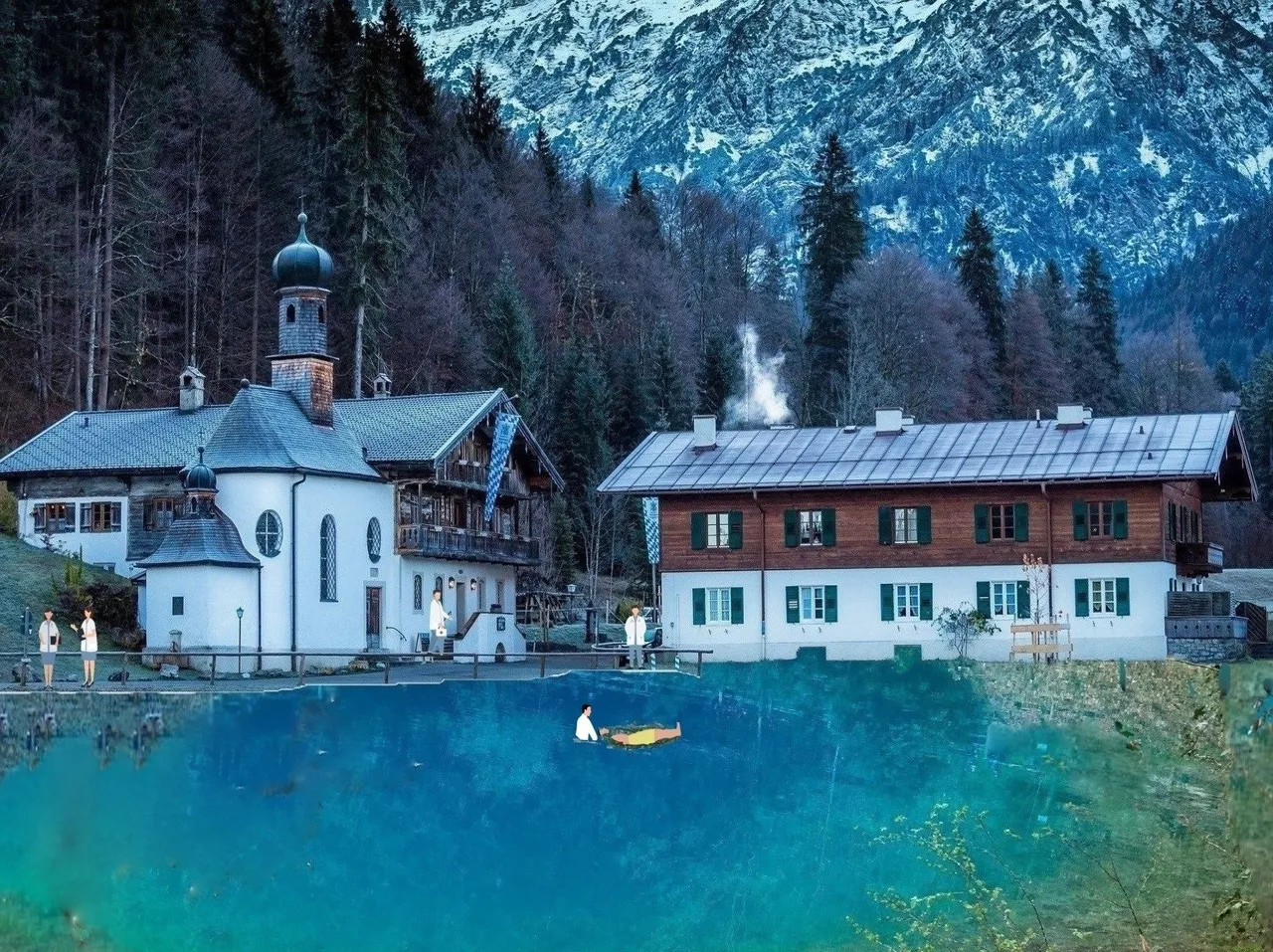
I was in high school when I first read Thomas Mann's Magic Mountain. The novel is a masterpiece in which the major character suffers from tuberculosis and receives treatment in a sanatorium.
Many years later, while my husband was competing at a billiards tournament in Colorado Springs, Colorado, I chanced upon a building that had once served as a sanatorium for people suffering from consumption. Consumption is one of the terms used to describe tuberculosis in the nineteenth century. The building was the main hall of Colorado State University in Colorado Springs.
Historic Cragmore Sanatorium, Today the Main Hall of Colorado University at Colorado Springs, CO.
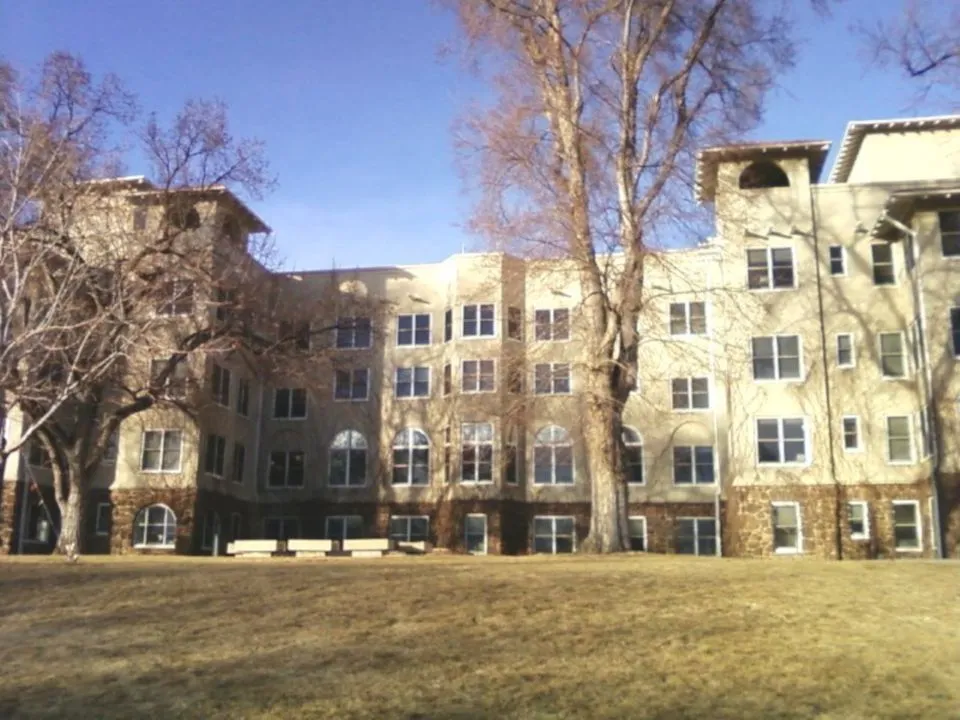
Image credit: Xnatedawgx. Used under a CC 3.0 license.
Cragmor opened in 1905. It was designed to accommodate wealthy patients. The architecture reflected the belief that rest, and dry mountain air were good for consumptives. There was no cure for TB at the time, besides these lifestyle interventions. Streptomycin, an antibiotic, would not be used in the treatment of tuberculosis until 1943.
However, there were earlier interventions, besides lifestyle, that were helpful in some cases. One of these was artificial pneumothorax.
Carlo Forlanini Performing Artificial Pneumothorax (Possibly 1882)
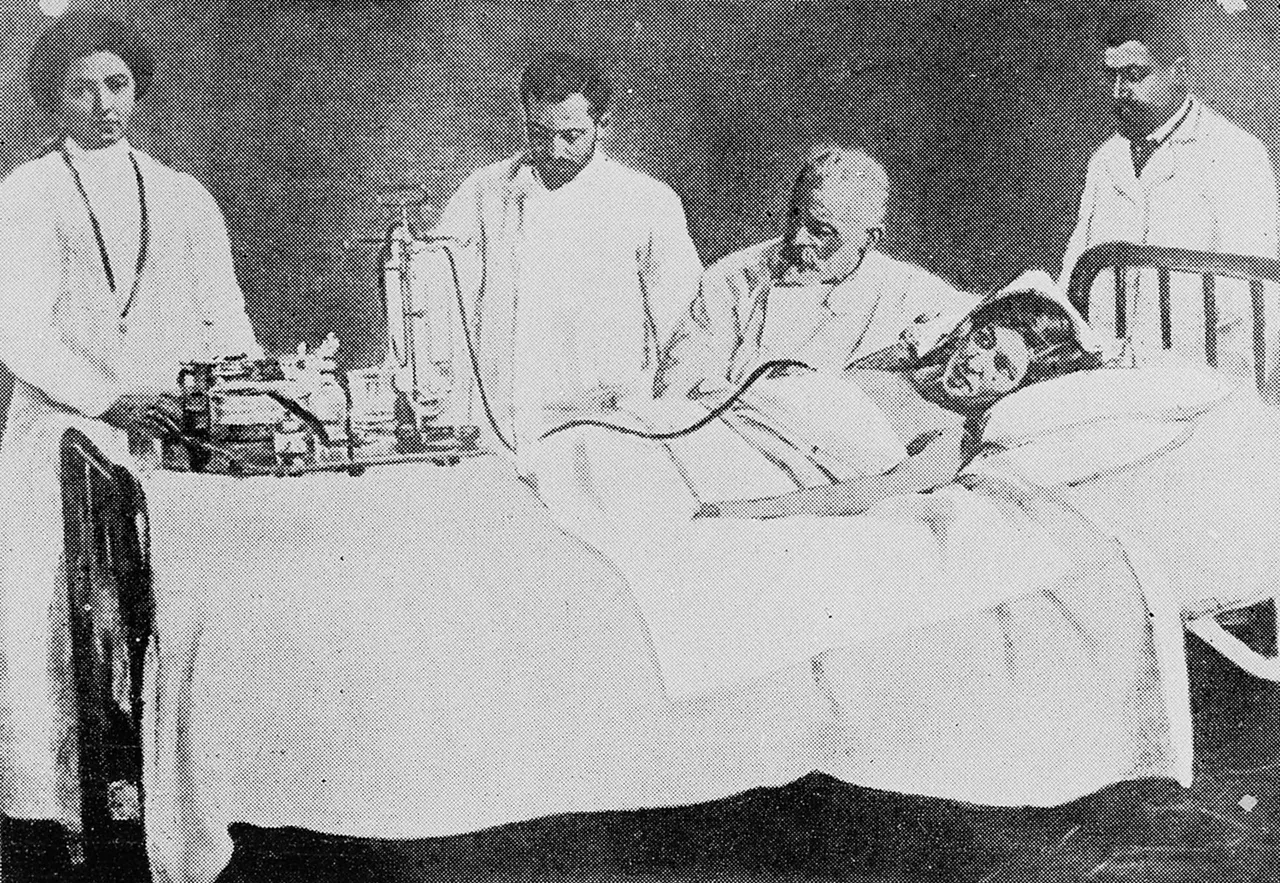
Image credit: Welcome Trust. This file comes from Science Museum Group, in the United Kingdom. Refer to Wellcome blog post (archive). Used under a CC 4.0 license.
Artificial pneumonthorax is a surgical intervention premised on the principle of rest. An amazing, trip-back-in-time, 1919 article in the American Journal of Nursing explains in glowing terms the procedure and its benefits. The goal is rest of the affected organ. A needle is inserted into the lung and air (or nitrogen) is pumped in, sometimes in a series of procedures over weeks or months. The lung collapses, and rests.
Pneumothorax Device Used by Forlanini
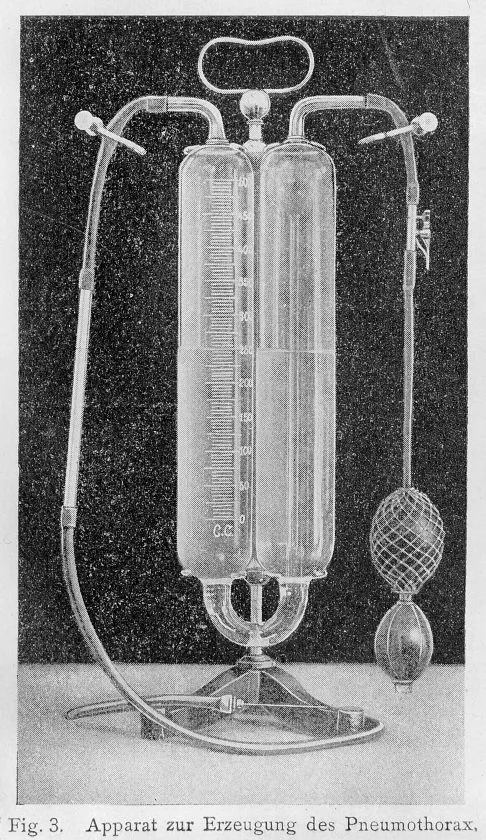
Image credit: Welcome Trust. This file comes from Science Museum Group, in the United Kingdom. Refer to Wellcome blog post (archive). Used under a CC 4.0 license.
Pneumothorax can occur naturally (a spontaneously collapsed lung), but today is also used as a surgical intervention in a number of conditions.
Rise of the Sanatorium Movement
Although epidemics of infectious disease swept across Europe and the United States in the 1800s, tuberculosis was by far the leading cause of death in those places. The rise of sanatoriums was one result of this death toll. Although these isolated (for sanatoriums did isolate patients) health facilities were often located in mountainous regions, in Italy maritime locales were favored.
Sävsjö Sanatorium, Sweden
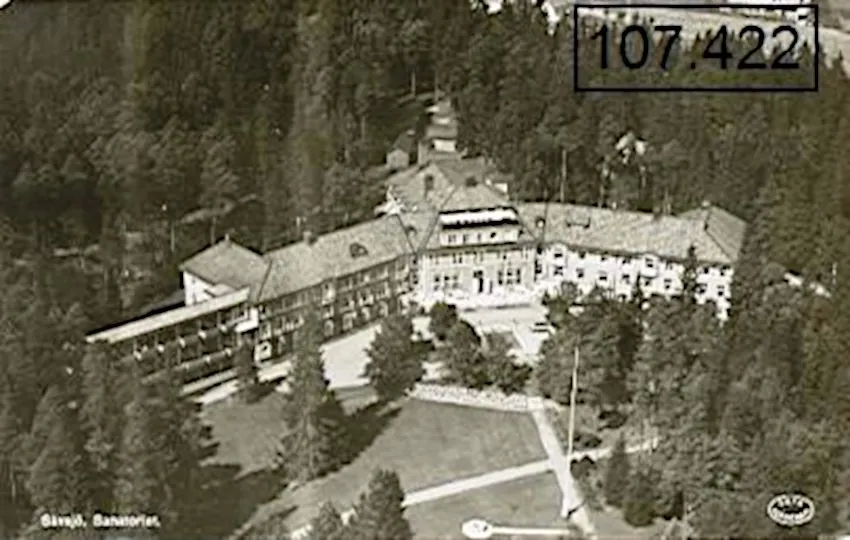
Morens Photo. Public domain.
In 1907 this sanatorium was constructed for the treatment of severe lung disease, essentially tuberculosis. The facility was surrounded by pine forests and vegetation.
Children Taking Sun and Sea Cure At Marine Hospital, Florence, Italy
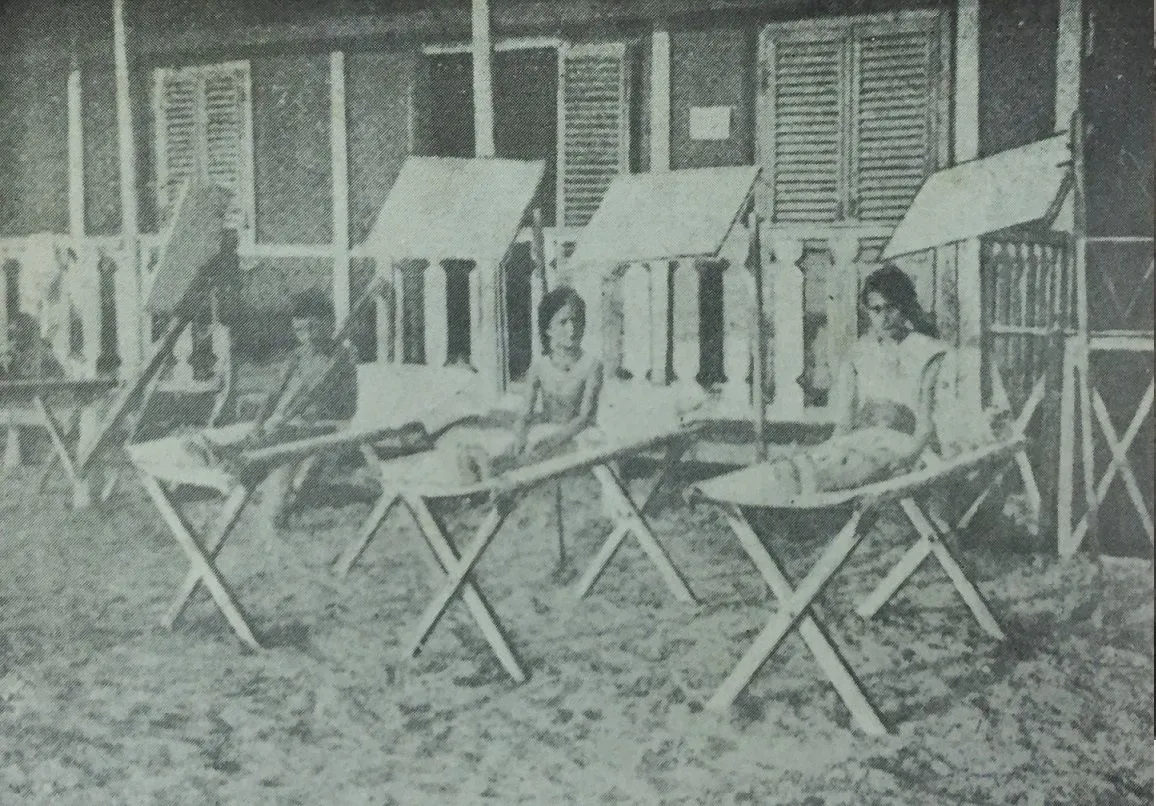
Image credit:Himetop The History of Medicine Topographical Database.Creative Commons Attribution-ShareAlike 3.0 License
In keeping with the theory that a marine climate was beneficial to patients suffering from tuberculosis, this Florence hospice was constructed between 1861 and 1869.
The End of the Sanatorium Movement: The Madras Study
A Silesian physician who had suffered from tuberculosis, Hermann Brehmer, is credited with founding the first sanatorium, in 1870.
Brehmersche Heilanstalt für Lungenkranke
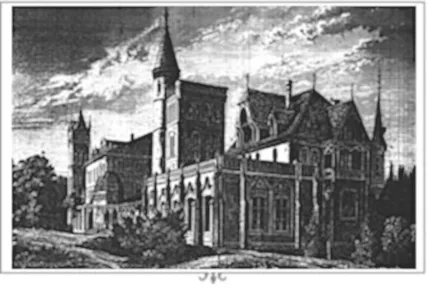
Image credit: Public domain
In 1956, Dr Wallace Fox, Director of the Tuberculosis Chemotherapy Centre in Madras, India began a study on the health benefits of treatment in a sanatorium. He compared outcomes of home domiciled and sanatorium domiciled patients (on a TB drug regimen). The five-year study showed that treatment at home was as effective as sanatorium treatment. Also, there was no difference in relapse rate. Sanatoriums across the world closed shop, or converted to other uses.

Although I made a collage this week, I am not competing in the contest. For me, the competition was never the best part of LMAC. It's the community and the art adventure that I love. If I stopped making collages it would be like giving up coffee: unthinkable :)
When I saw @shaka's amazing photo, I was certain I would keep the beautiful blue lake.
@shaka's Template Photo
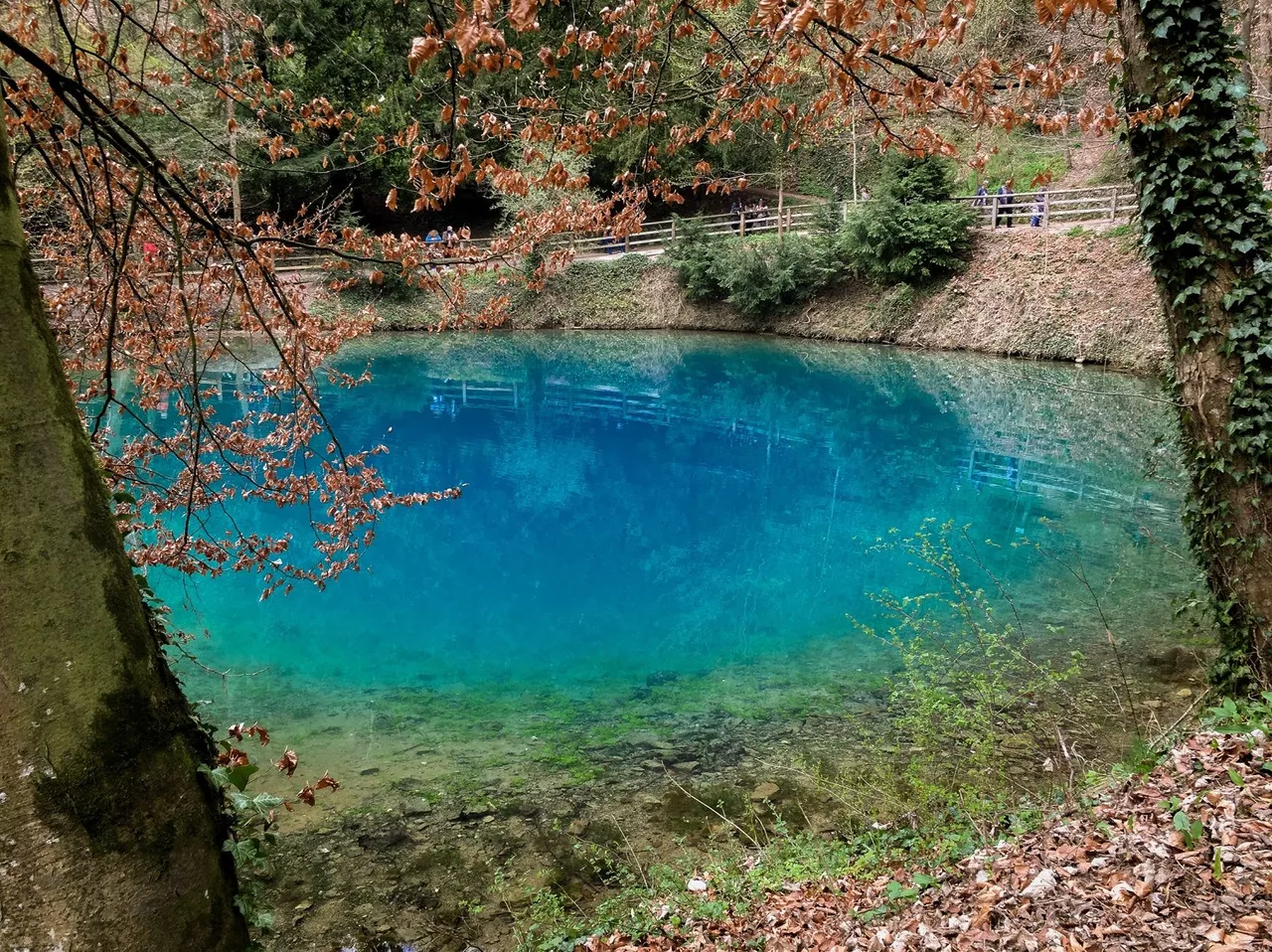
Then I thought of my visit to Colorado Springs and the Broadmoor Hotel. I had visited the Broadmoor when I was in Colorado, and that image was in my mind. This hotel had once been an exclusive tuberculosis sanatorium.
Broadmoor Hotel

Image credit:Keith Knapp. Used under a CC 3.0 license.
The buildings in my collage are actually from a picture of the Kreuth Sanatorium and Spa in Bavaria. The other elements in my collage (doctors, lake ripple and patient) are from pixabay.

I hope everyone in the growing LMAC community is having as much fun as I have had this week in making my collage and writing my blog. I thank @shaka, as I always do, for creating this opportunity and for fostering a community where everyone is welcome.
The rules for LMAC may be found at @shaka's blog.
Our school, run by the inimitable @quantumg may be found here.
And our Discord Channel is open for community members to touch base.
Good luck, to everyone!
